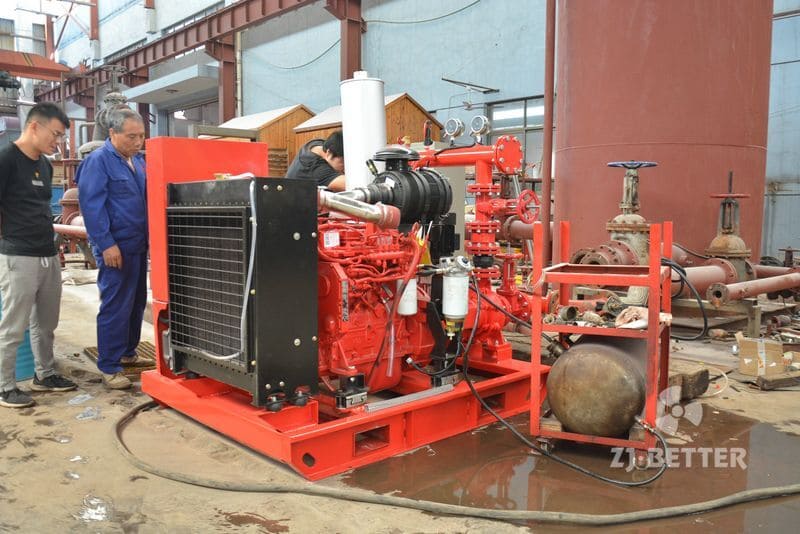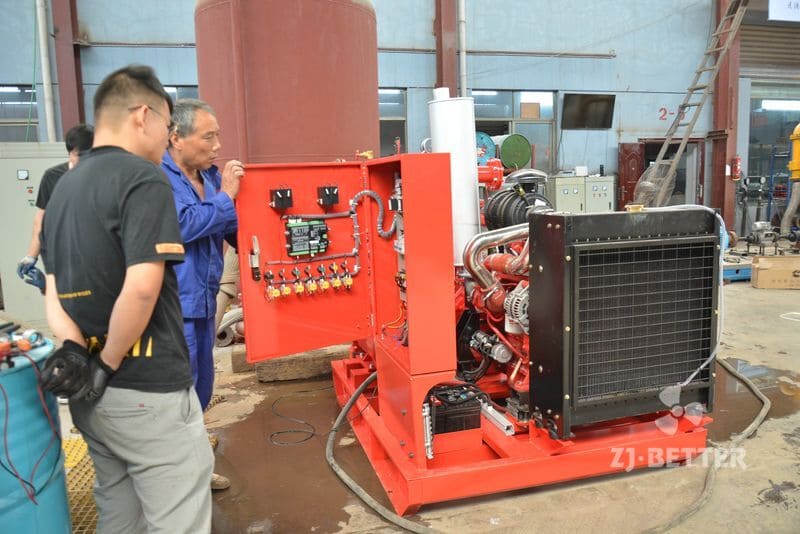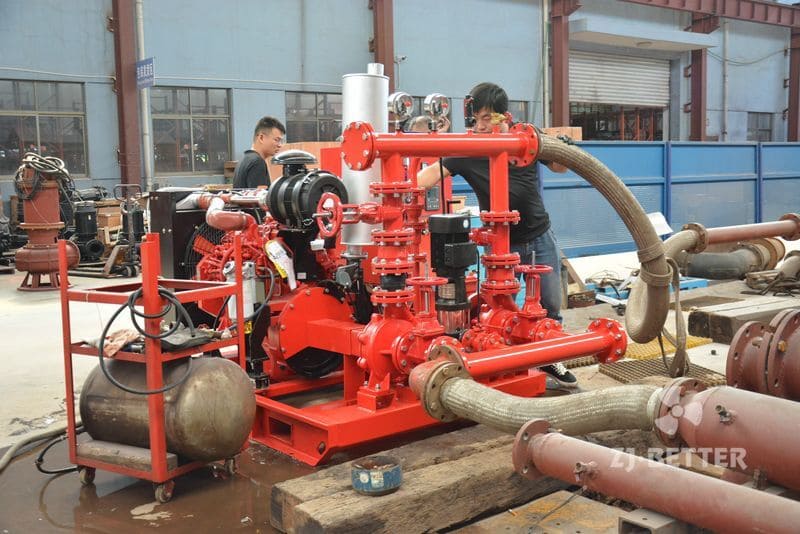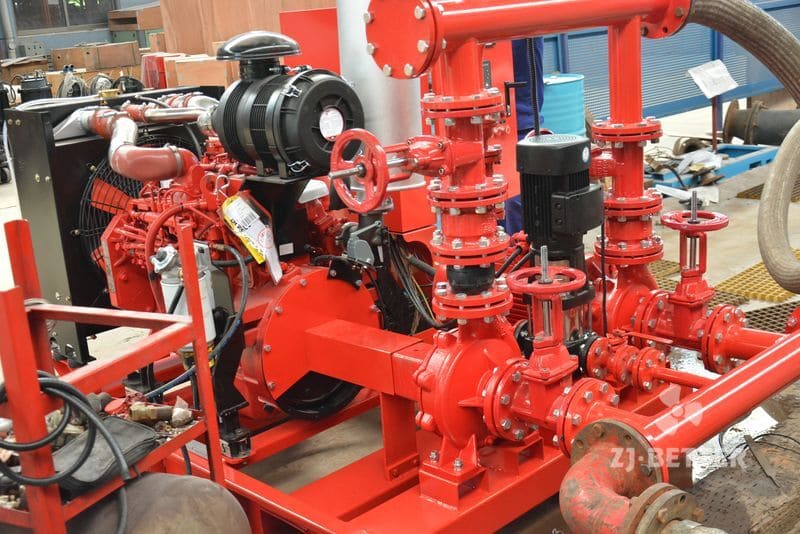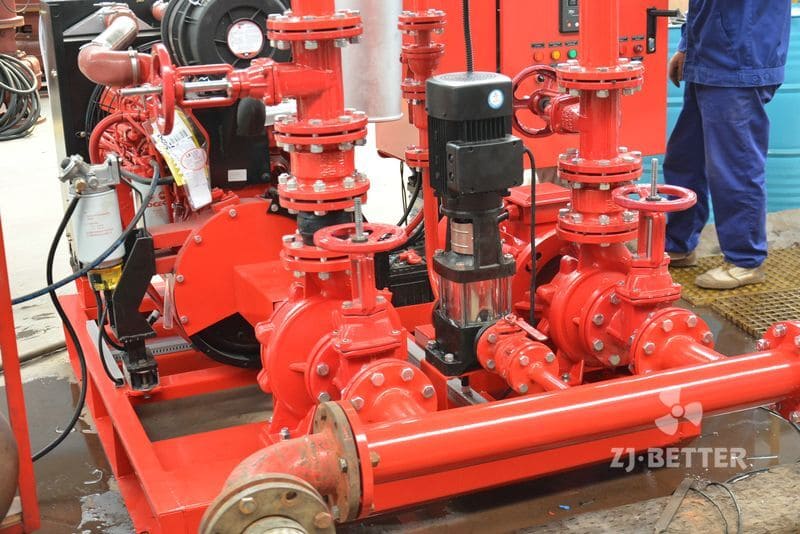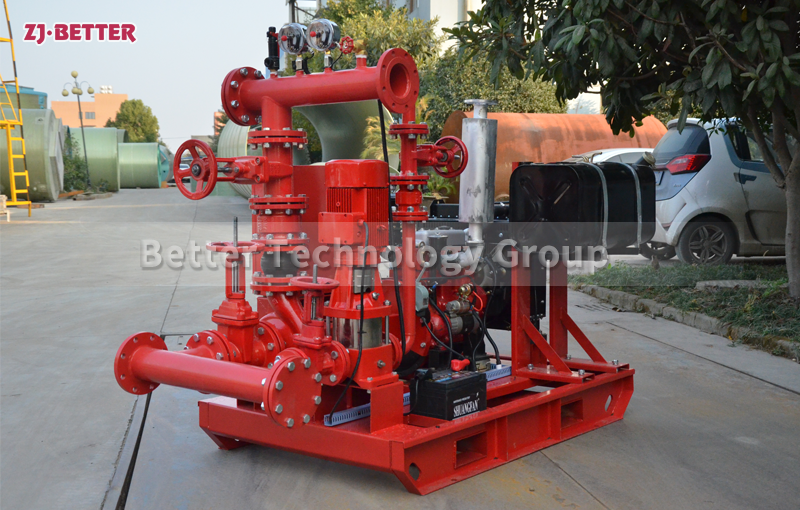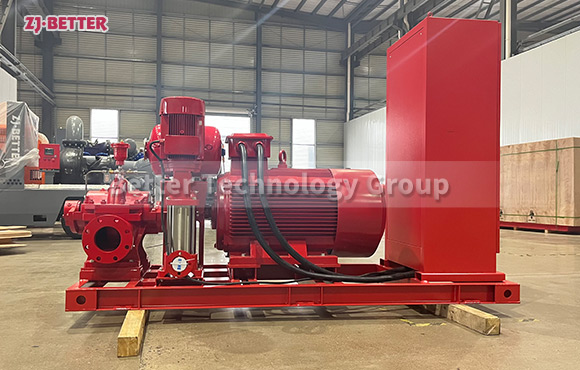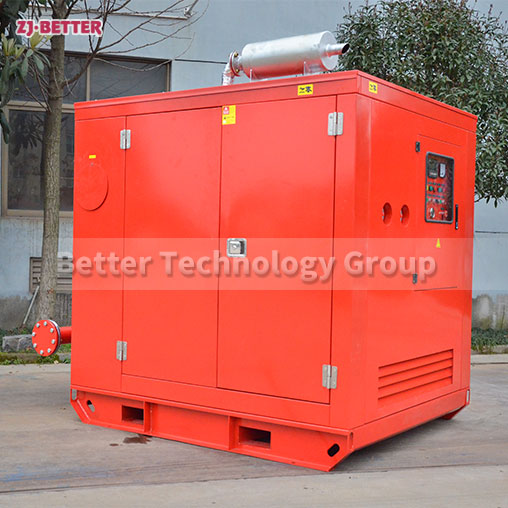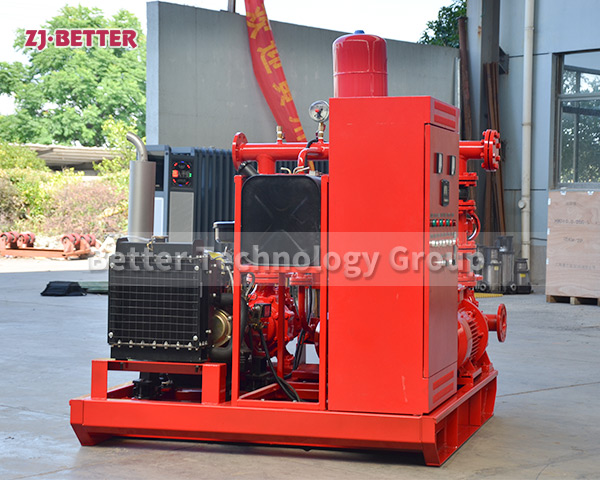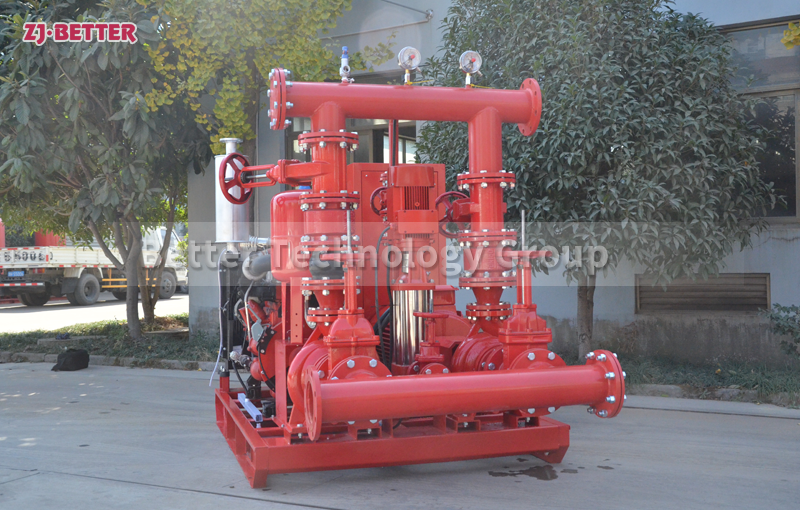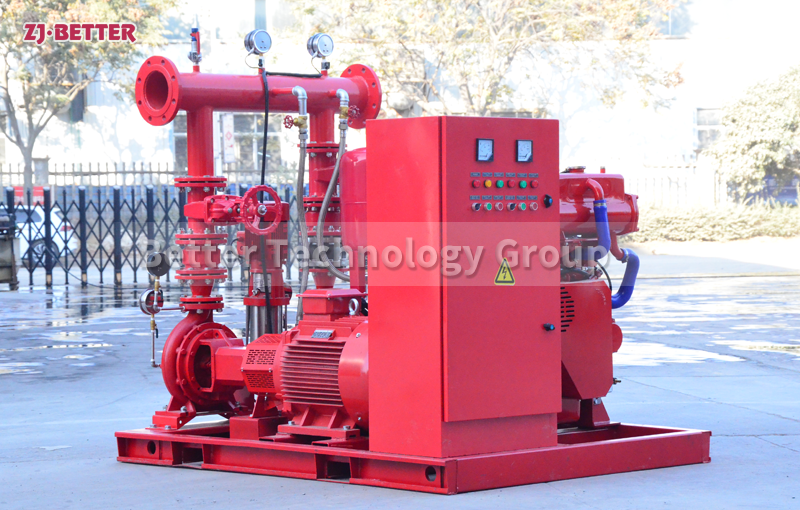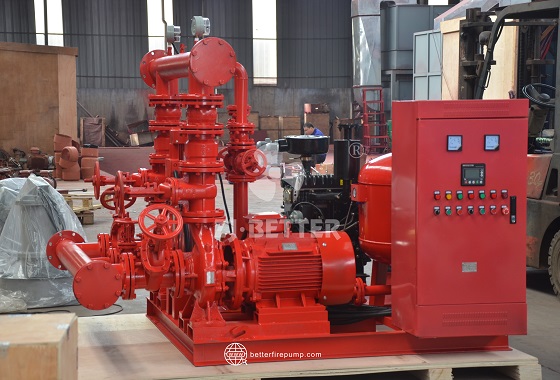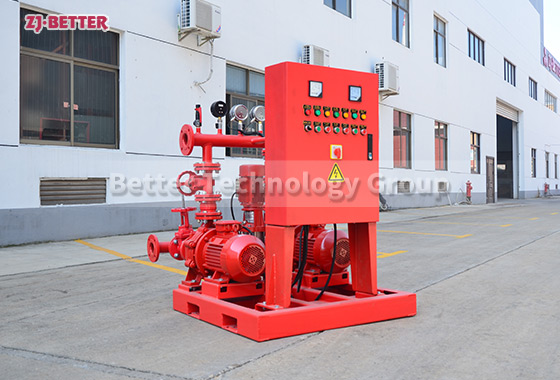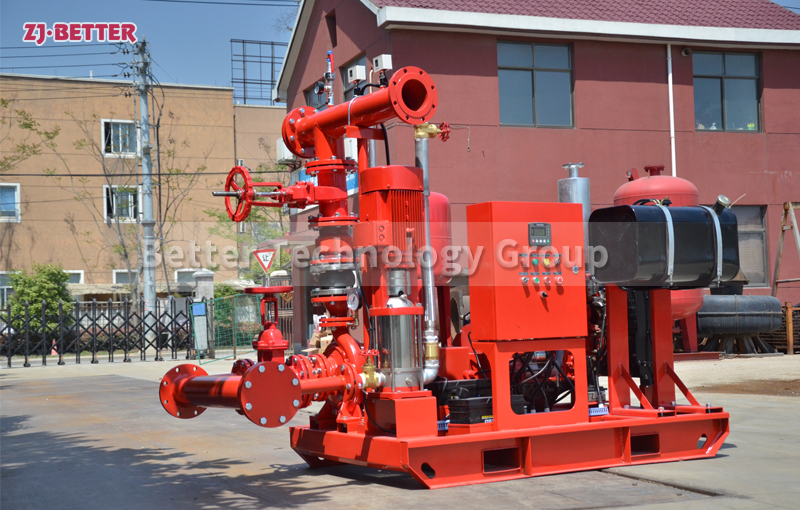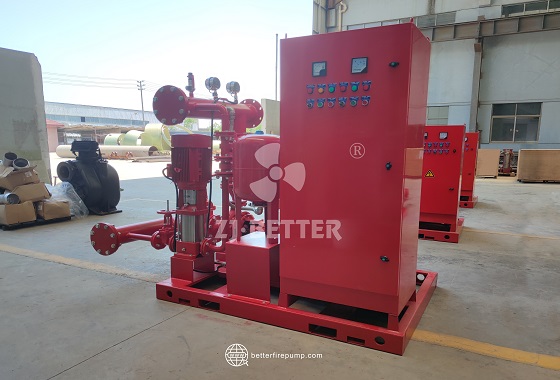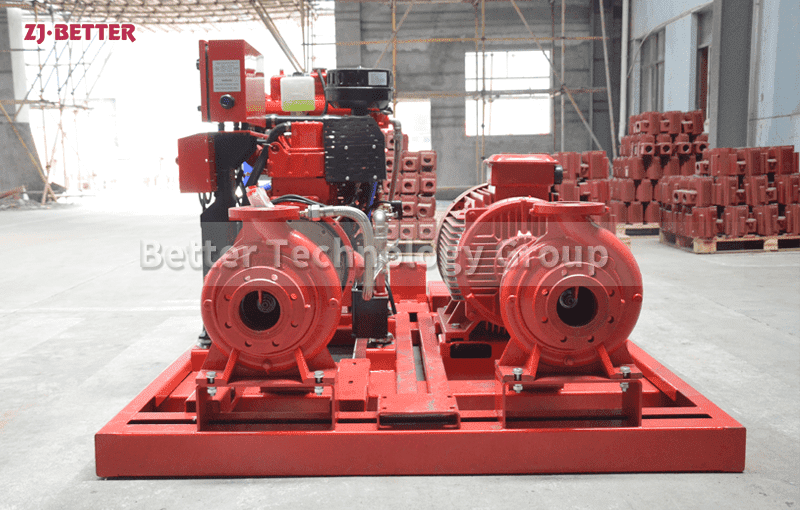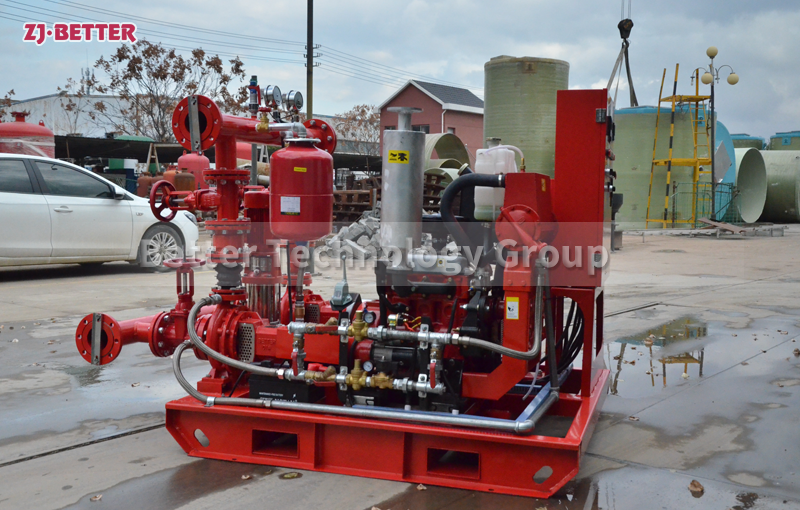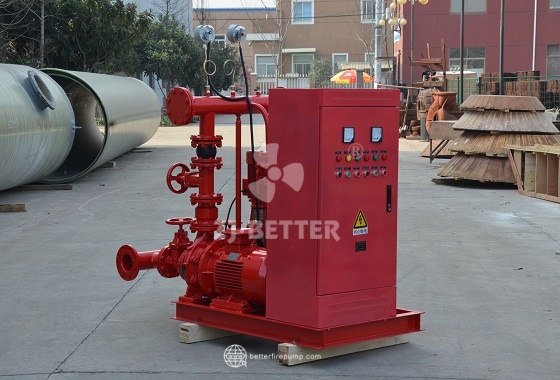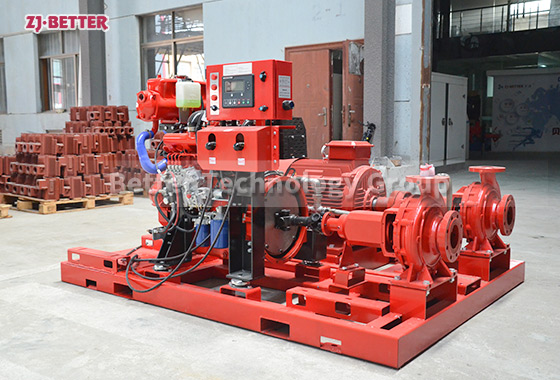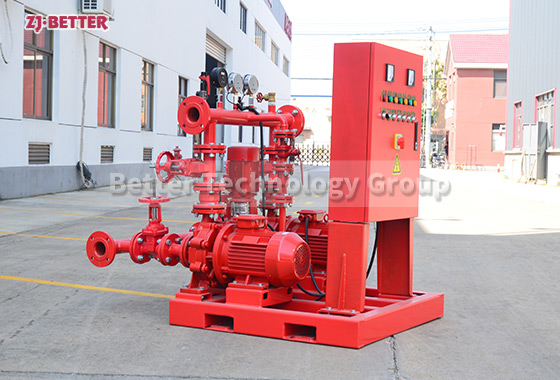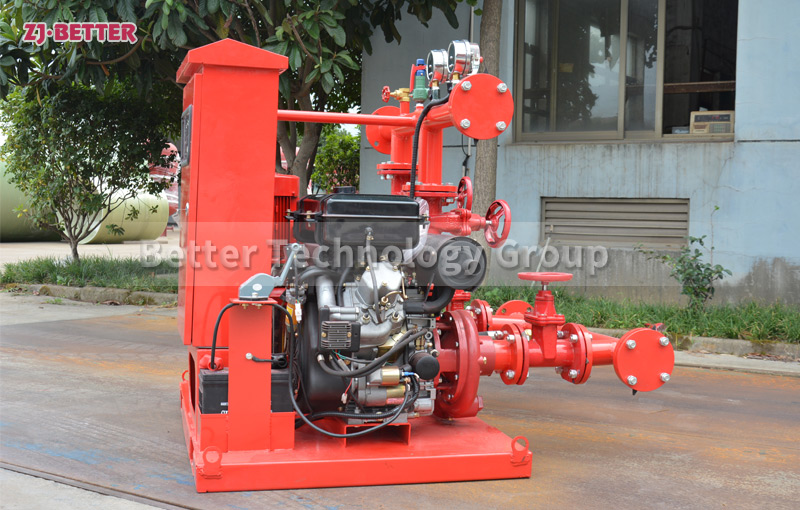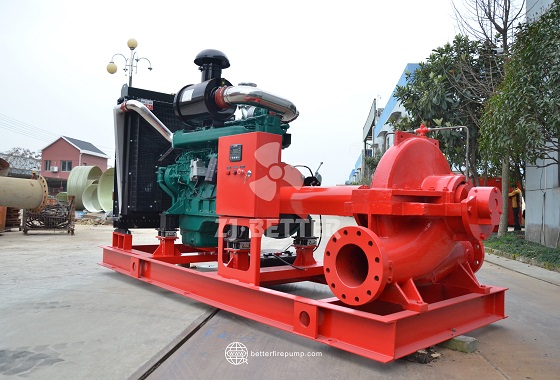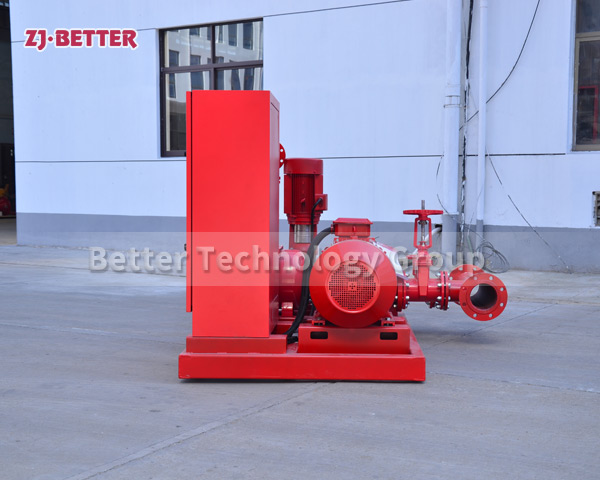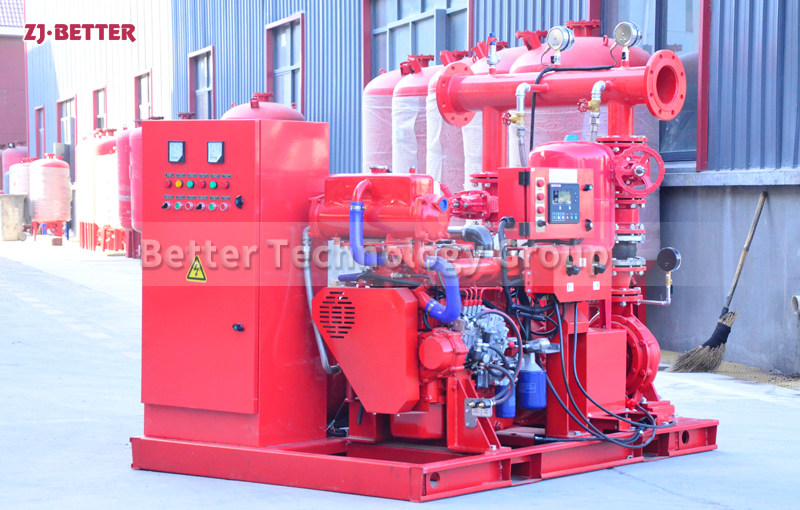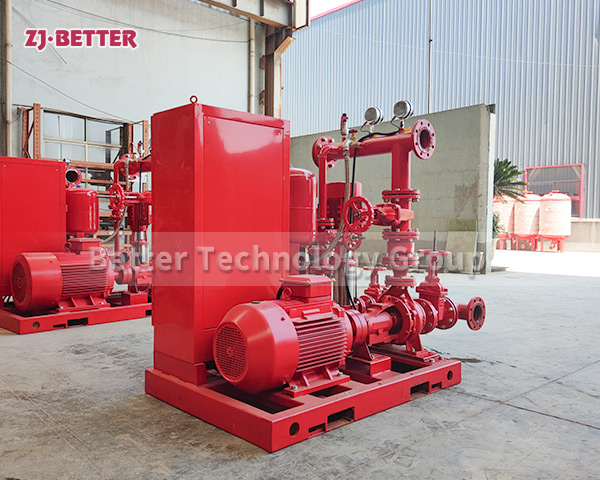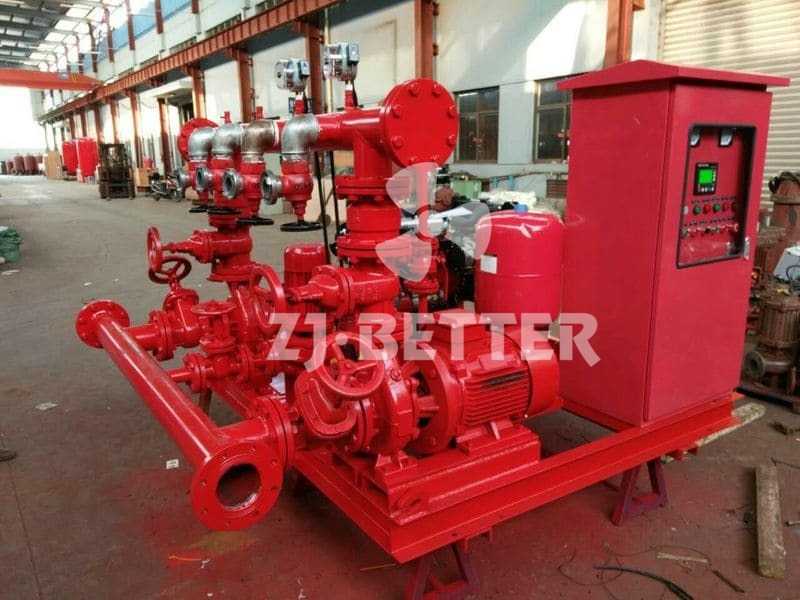Testing The EDJ Fire Pump Set
The EDJ fire pump set is tested in the Better factory, and our company’s fire pump set needs to be tested after the assembly is completed to ensure the quality. EDJ fire pump sets are widely used in large public places, factories, firefighting and other occasions.
Fire pump package comprises a combination of electric motor driven pump, diesel engine driven and electric motor driven jockey pumps that supply for fire suppression systems.
Fire pump package is required to comply with Local Civil Defense Authority regulations and International Codes of Practice e.g. National Fire Protection Association (NFPA).
Types of pumps used for fire service include: end suction, horizontal split case, vertical split case, vertical inline and vertical turbines.
1. Electric motor driven pump, can use single stage pump, horizontal split case pump, end suction pump, multistage pump, material can be cast iron, stainless steel, and bronze impeller.
2. Diesel engine pump, with capacity and head equal to electric pump, with fuel tank, water tank,fan, control box.
3. Jockey pump, horizontal or vertical, capacity will be small, but head should be higher than electric and diesel engine pump.
4. Control panel: Auto Control of electric pump, diesel engine pump and Jockey Pump with overload, over current protection.
5. Accessories: check valve, gate valve, pressure vessel, generally 0.6mpa, 1.0mpa, 1.6mpa, Pressure Gauge, Pressure Sensor, Common Pipe for Suction and Discharge, Flexible Joints and Flanges, Common Base plant.

